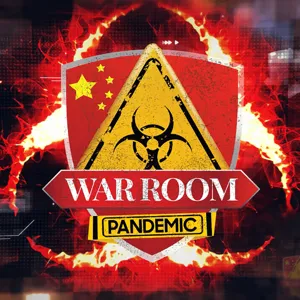By Yaffa Shir-Raz at Brownstone dot org.
In June 2025, the Advisory Committee on Immunization Practices (ACIP) held its first meeting under the new leadership appointed by Health Secretary Robert F. Kennedy, Jr. The public expectation was clear: that this newly appointed committee would restore rigor, independence, and critical examination of evidence before recommending routine use of new pharmaceutical products.
One of the most significant items on the agenda was whether to recommend Merck's new RSV monoclonal antibody, Clesrovimab, for routine use in healthy newborns. Though marketed as a new product, it is nearly identical in structure and function to Sanofi-AstraZeneca's nirsevimab, approved in 2023.
The committee ultimately voted 5 to 2 in favor of the recommendation. That vote followed a CDC presentation, which framed the safety data as reassuring, leading most members to conclude there were no outstanding safety concerns.
But was that reassurance justified? And on what exactly was it based?
The Seizure Signal, and How It Was Presented
During its June 2025 meeting, ACIP members were shown a safety slide from the CDC's Vaccine Safety Datalink (VSD), focusing on seizures after administration of nirsevimab. The data were split into two age groups: infants aged 0-37 days and those aged 38 days to under 8 months. Each group showed elevated risk ratios for seizures (3.50 and 4.38, respectively), but both were labeled "not significant." No pooled analysis was displayed.
However, as Dr. Maryanne Demasi later reported, combining the two groups into a single cohort yields a very different picture: a nearly four-fold increase in seizure risk (RR 3.93, 95% CI 1.21-12.79, p=0.02), a result that is statistically significant. That consolidated signal was never presented to the committee.
The decision to stratify at 38 days - precisely the point in US schedules when routine infant vaccinations begin - had no clear biological justification, and by dispersing the signal across two smaller groups, it effectively erased the statistical significance.
A second design choice compounded the problem. The CDC's analysis applied a self-controlled risk interval with only the first 7 days designated as "risk" and days 8-21 treated as the "control" period. Any seizure occurring on day 8 or later was thus counted against the background rate, even though such timing could plausibly reflect a product-related effect. Standard pharmacovigilance practice calls for testing multiple windows, not a single narrow cutoff.
These analytical decisions mattered. The vote to recommend clesrovimab passed 5-2. Had members been shown the pooled seizure risk alongside the consistent trial-level imbalances in nervous system events, shifting just two votes would have changed the outcome.
Finally, as Demasi emphasized, the concern is not confined to one brand. Given the structural similarity between nirsevimab and clesrovimab, the seizure risk is likely a class effect. This means the omission of the pooled analysis did not just obscure a statistical detail. It withheld information with direct implications for every RSV monoclonal antibody now in use.
These findings emerged only through independent reanalysis. Without Dr. Demasi's work, they may have remained unknown - not only to the public, but even to ACIP members casting their votes.
The Mortality Picture ACIP Did Not Weigh
The CDC's presentation to ACIP did not include any integrated review of mortality data from the clinical trials of either RSV monoclonal - not Merck's clesrovimab, and not Sanofi-AstraZeneca's nirsevimab. This omission is striking, given that across both product lines, trial results show a consistent and notable imbalance in deaths between treatment and control arms.
Nirsevimab: Deaths by Arm
FDA's Integrated Review for nirsevimab explicitly flagged an "unexpected imbalance" in deaths observed across pediatric trials. The data are as follows (Table 49, p.117):
Trial 03: 2 deaths among 968 nirsevi...





 View all episodes
View all episodes


 By Brownstone Institute
By Brownstone Institute



















